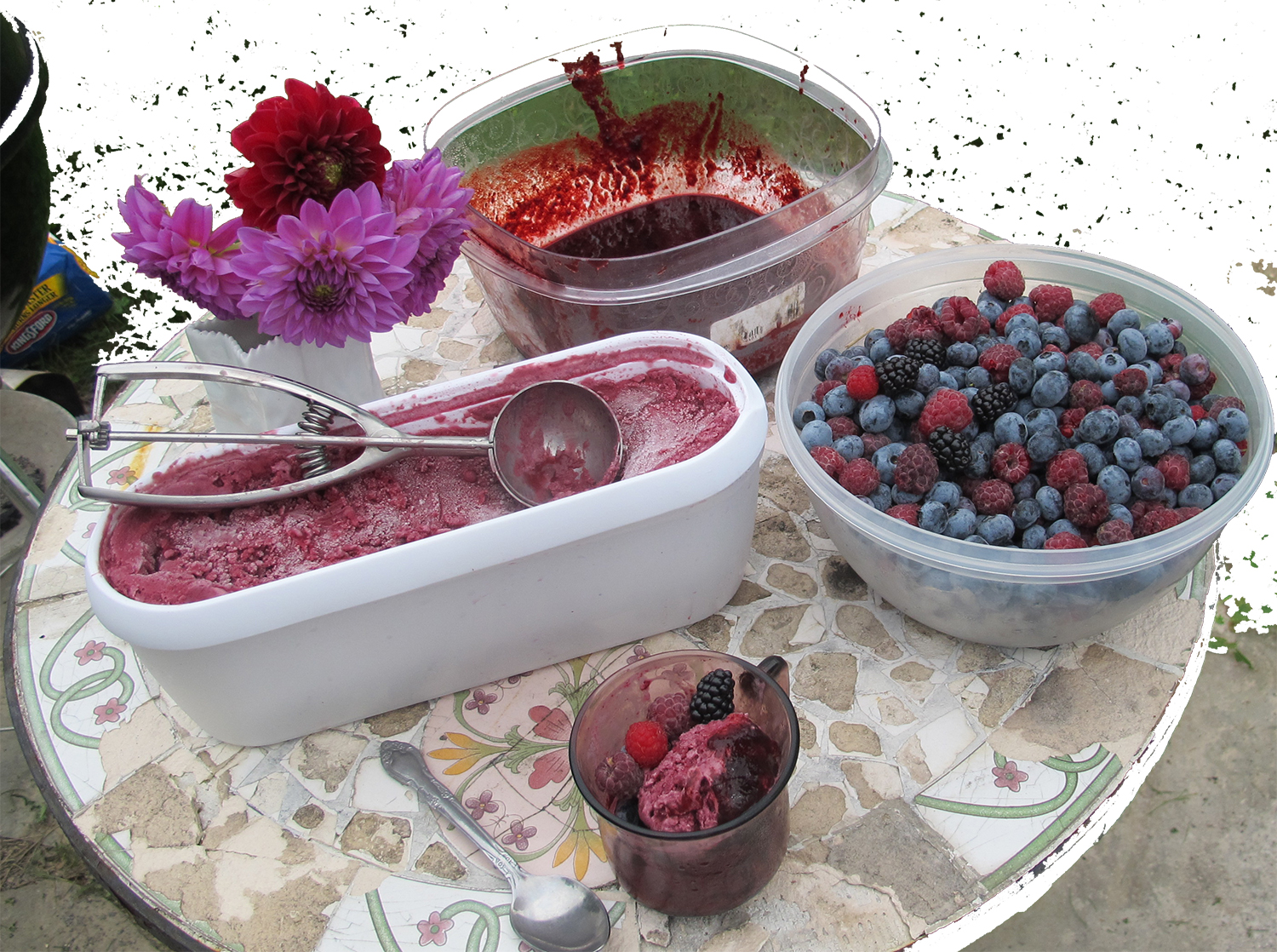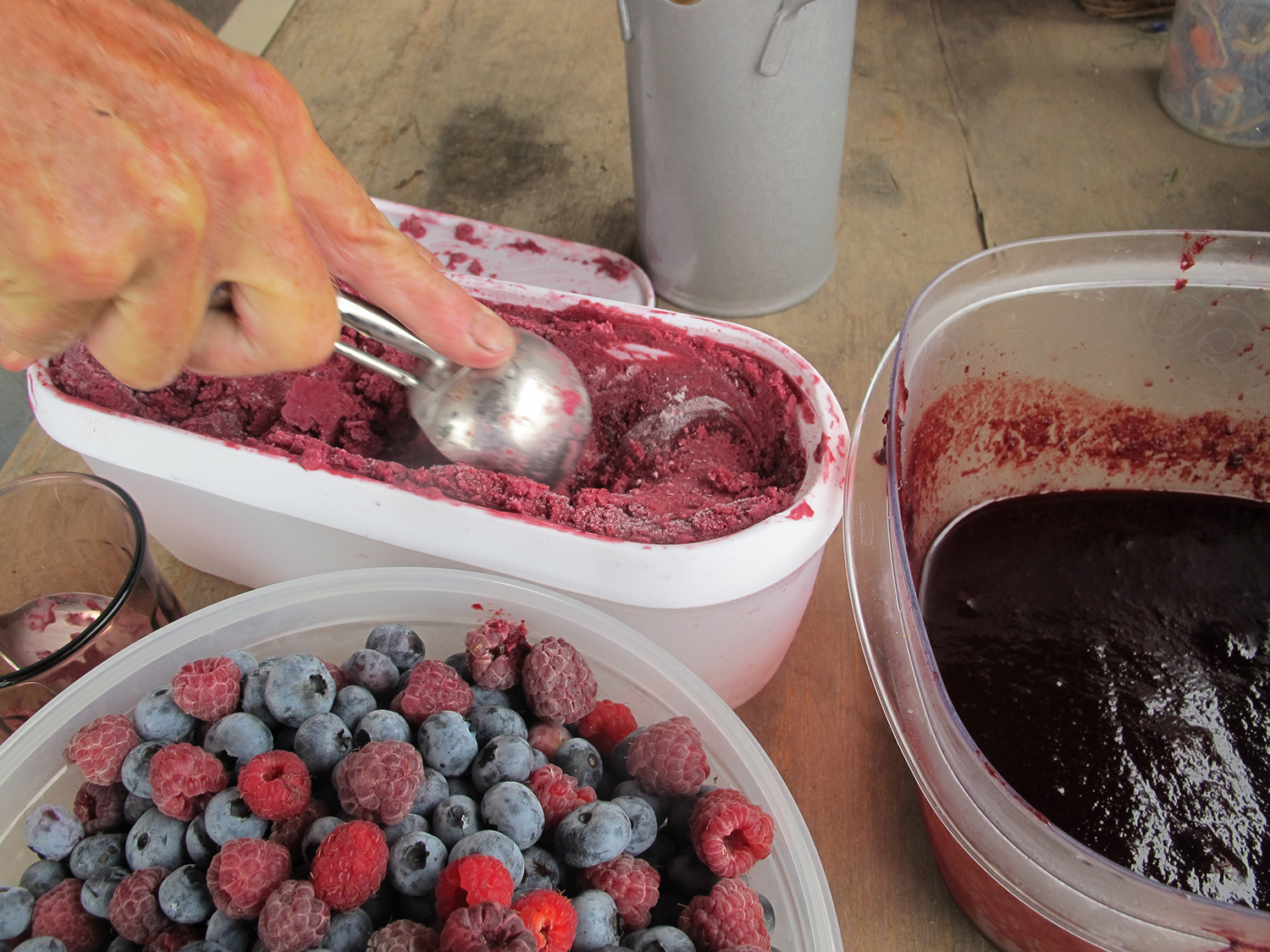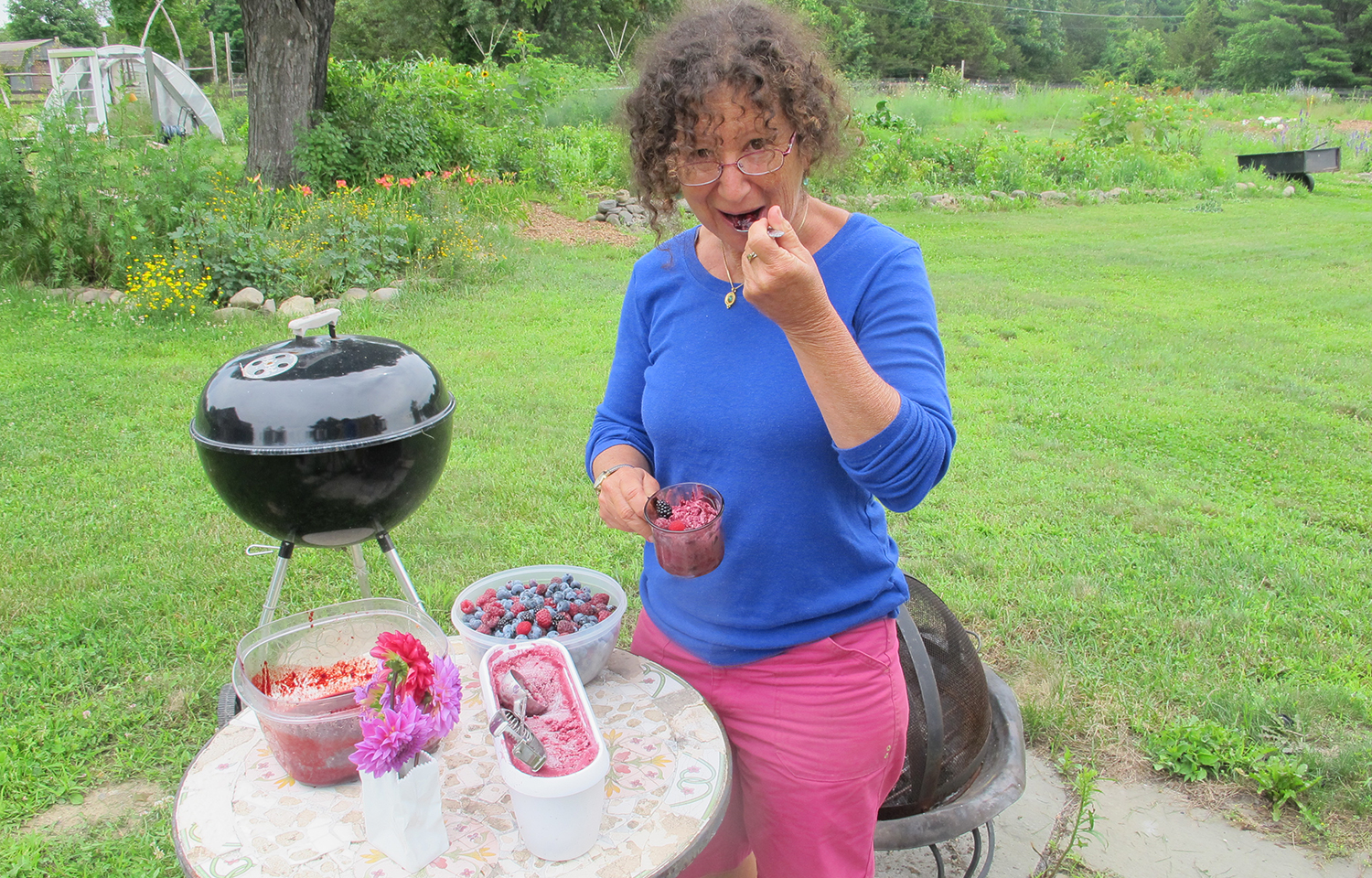Colors next to each other on the color wheel (no more than two primary colors) is known as analogous color. It is usually a very beautiful and satisfying color scheme. Check out these pics from our garden's harvest this past week of delicious berries. Featured are raspberries, black berries, and blue berries. A delicious sherbet was made after we made a coulis syrup from the berries. The color scheme is pleasing to look at and refreshing and delicious to eat!
All analogous colors. I removed the green grass to help illustrate this concept of color harmony.
Colors are: Yellow, yellow orange, orange, red orange, red, red violet, violet, blue violet, blue, blue green, green, yellow green.
Colors included are blue violet, violet, red violet, and red. Notice there are only two primaries and blends of these two primaries. The primary colors are blue and red. There is no yellow which is the third primary color.
Analogous colors: blue violet, violet, red violet, red.
Cool and refreshing to look at and to eat!
Notice I am wearing analogous colors too: red violet, and blue violet. Believe it or not this was a coincidence and not planned for this color lesson. Probably because I am fond of analogous colors!
The berries are all in blues, violets, and reds. The green leaves make the color composition different and not only analogous colors. There is nothing wrong with these colors, it just creates a different mood.
The Plant ID Pages are from the book: Foraging & Feasting; A Field Guide and Wild Food Cookbook by Dina Falconi and Illustrated by Wendy Hollender







Even the Dahlias in the background are using the same colors. Only the colors in the grass are not analogous as green has yellow in it.